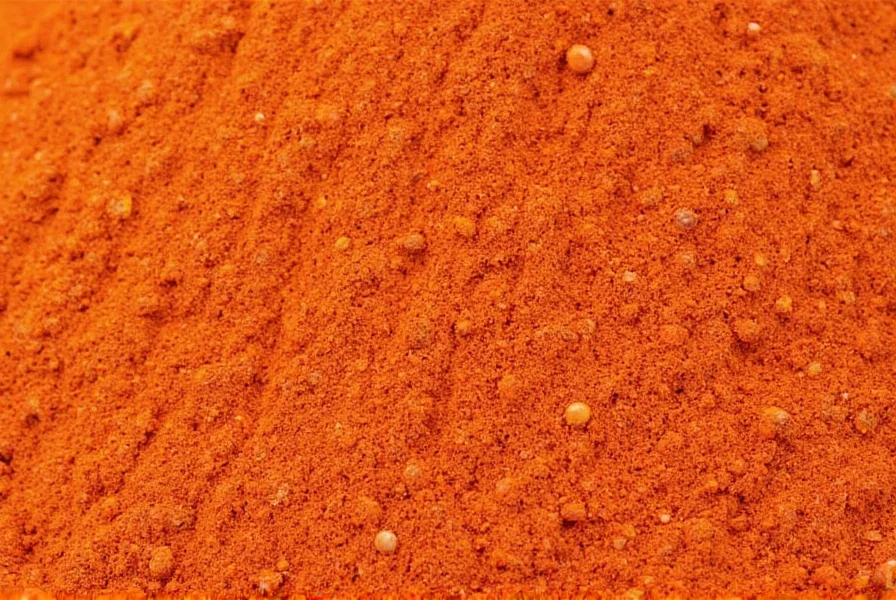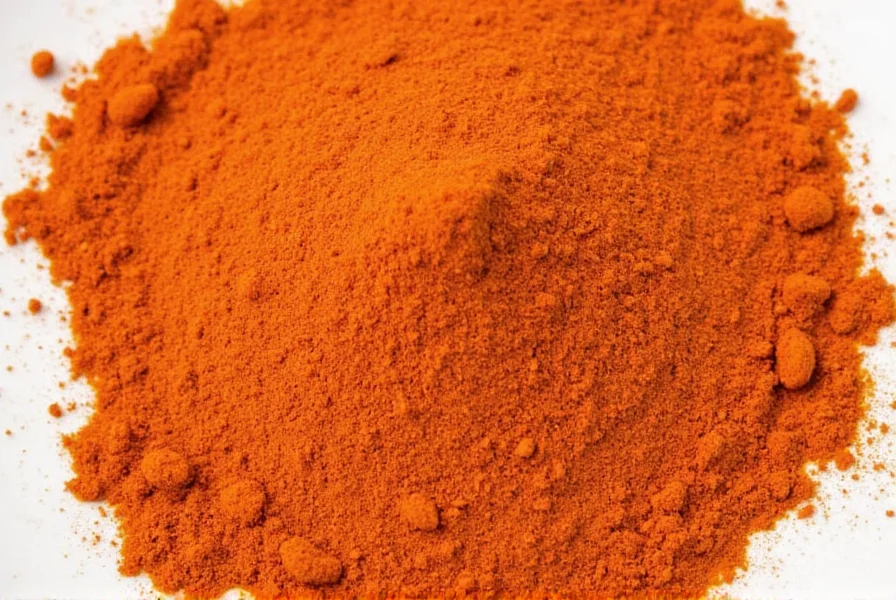
What is Pimento Powder?
Pimento powder is a mild, sweet spice made from dried and ground red peppers, specifically the large, thick-walled pimento variety. It's often confused with paprika but has distinct characteristics. Unlike spicy chili powders, pimento powder delivers subtle warmth with rich, earthy undertones and no significant heat. This guide covers everything you need to know about pimento powder, including its flavor profile, culinary uses, buying tips, storage advice, and health considerations.
Flavor Profile & Culinary Magic
So, how does pimento powder taste exactly?
- Sweetness: Mildly sugary, like roasted bell peppers
- Heat Level: Very low — Scoville scale of 100–500 (jalepeño ranges from 2,500–8,000)
- Aroma: Smoky-sweet, especially in smoked versions
- Mouthfeel: Silky smooth texture when well-ground
Its mildness makes it ideal for adding color and depth without overpowering other flavors — a perfect supporting actor in the spice world.
| Spice | Heat Level | Flavor Notes | Best Uses |
|---|---|---|---|
| Pimento Powder | Very Low | Sweet, smoky, earthy | Garnishes, light seasoning, stews |
| Paprika (Hungarian) | Varies (Sweet/Hot) | Dry, fruity | Stews, sauces, garnish |
| Cayenne | High | Sharp, fiery | Spicy dishes, marinades |
| Chili Powder (US) | Medium | Smoky, herbal, salty | Tacos, chili con carne |
This handy chart helps you choose the right spice based on your dish's flavor profile and heat preference.

How to Use It Like a Pro
If you're new to this vibrant red spice, here's how to unleash its full potential:
- Boost Soups and Stews: Add a teaspoon to tomato-based soups for richness and color.
- Rub for Meats: Mix with garlic, salt, and olive oil for a killer chicken or pork rub.
- Deviled Eggs: A pinch elevates deviled eggs from basic to brilliant.
- Seafood Seasoning: Try on shrimp or scallops before searing for a warm, earthy crust.
- Pastry Twist: Believe it or not, some bakers add a dash to chocolate desserts for complexity!
Buying Guide: Choosing the Best Pimento Powder
Not all pimento powders are created equal. Here's what to look for:
- Origin: Spanish pimentón or Hungarian paprika can sometimes be labeled as pimento powder; check labels carefully.
- Grind Size: Opt for fine powder unless specified otherwise. Coarser grinds may affect texture in delicate dishes.
- Color: Deep red hue indicates freshness and quality. Avoid dull or faded powders.
- Packaging: Opaque containers protect against light degradation. Glass jars with tight lids are best.
- Labeling: Look for "100% pure" or "no additives" — no fillers or anti-caking agents.
| Product Name | Features | Best For | Occasion |
|---|---|---|---|
| Sunrise Farms Organic Pimento Powder | Organic, finely ground, additive-free | Everyday cooking, baking, seasoning blends | Weeknight dinners, meal prep |
| La Vera Smoked Pimentón de la Vera | Natural smoke-dried over oak wood, deep flavor | Charcuterie, grilled meats, paella | Barbecues, dinner parties |
| Herbs & Spices Traditional Blend | Mild sweetness, vibrant red color | Garnishing, sauces, dips | Holiday spreads, appetizers |
Storage Tips for Maximum Flavor Longevity
Once you've found your perfect pimento powder, keep it tasting fresh with these tips:
- Keep Cool: Store in a dark, dry pantry away from heat sources like ovens or sunlight.
- Use Airtight Containers: Oxygen is the enemy of spices. Make sure your container has a tight seal.
- Avoid Humidity: Moisture can clump and degrade your spice. Don't store near the stove or sink.
- Replace Every 1–2 Years: Ground spices lose potency over time. Mark purchase dates for easy tracking.
Is Pimento Powder Safe? Health Considerations
Pimento powder is safe for most people when consumed in normal food amounts. It's rich in vitamin C, antioxidants, and beta-carotene, providing nutritional benefits without significant calories. However, note:
- Heat Sensitivity: While mild, excessive use might irritate those with sensitive stomachs.
- Allergies: If you're allergic to nightshade vegetables (like tomatoes or eggplants), consult your doctor before consuming large quantities.

Frequently Asked Questions
What exactly is pimento powder?
Pimento powder is made from dried and ground sweet red peppers, specifically the large, thick-walled variety known as pimentos. It's the same pepper often found stuffed inside olives. Despite the name similarity, it's different from allspice (which is sometimes called "pimento" in Jamaica).
Is pimento powder the same as paprika?
They're closely related but not exactly the same. In many European countries, "paprika" refers to what Americans call "pimento powder." True paprika (especially Hungarian) can have different flavor profiles and heat levels. Pimento powder is typically milder and sweeter than many paprika varieties.
How spicy is pimento powder?
Pimento powder is very mild, with a Scoville rating of 100-500 units. For comparison, a jalapeño ranges from 2,500-8,000 units. It offers subtle warmth with predominant sweet, earthy notes rather than significant heat.
What can I use as a substitute for pimento powder?
The best substitutes are sweet paprika or a mixture of mild chili powder with a pinch of sugar. For smoked flavor, use smoked paprika. Avoid hot chili powders as they'll make your dish much spicier than intended.
How long does pimento powder stay fresh?
Properly stored in an airtight container away from light and heat, pimento powder maintains peak flavor for 1-2 years. After this time, it won't spoil but will gradually lose its vibrant color and aromatic properties.
Can I make pimento powder at home?
Yes! Slice fresh pimentos, dehydrate them until completely dry and brittle, then grind to a fine powder in a spice grinder. Store in an airtight container. Note: home versions won't be as finely ground as commercial products unless you have professional equipment.
Is pimento powder healthy?
Absolutely. Like other red peppers, it's rich in vitamin C, antioxidants, and beta-carotene. It contains capsaicin (in minimal amounts) which may support metabolism. One teaspoon adds nutritional value without significant calories.
What dishes work best with pimento powder?
It shines in tomato-based sauces, deviled eggs, seafood dishes, roasted vegetables, and even some chocolate desserts. Its mild sweetness complements rather than overwhelms, making it versatile for both savory and slightly sweet applications.
Fun Facts You Probably Didn't Know
- Pimento means "pepper" in Spanish — so you're literally sprinkling "pepper powder."”
- It takes roughly 4 pounds of fresh pimentos to make 1 pound of powder.
- In the 19th century, paprika (a cousin of pimento powder) was considered a status symbol in Hungary and was even gifted during weddings.
- Some cultures believe red spices like pimento powder bring good luck and prosperity.
Final Thoughts: Why You Should Add This Spice to Your Pantry
Pimento powder is a versatile, mild spice that enhances dishes with sweet warmth and vibrant color without overpowering heat. Whether you're a beginner or seasoned chef, it deserves a place in your kitchen for everyday meals or special occasions. Start experimenting today!










 浙公网安备
33010002000092号
浙公网安备
33010002000092号 浙B2-20120091-4
浙B2-20120091-4